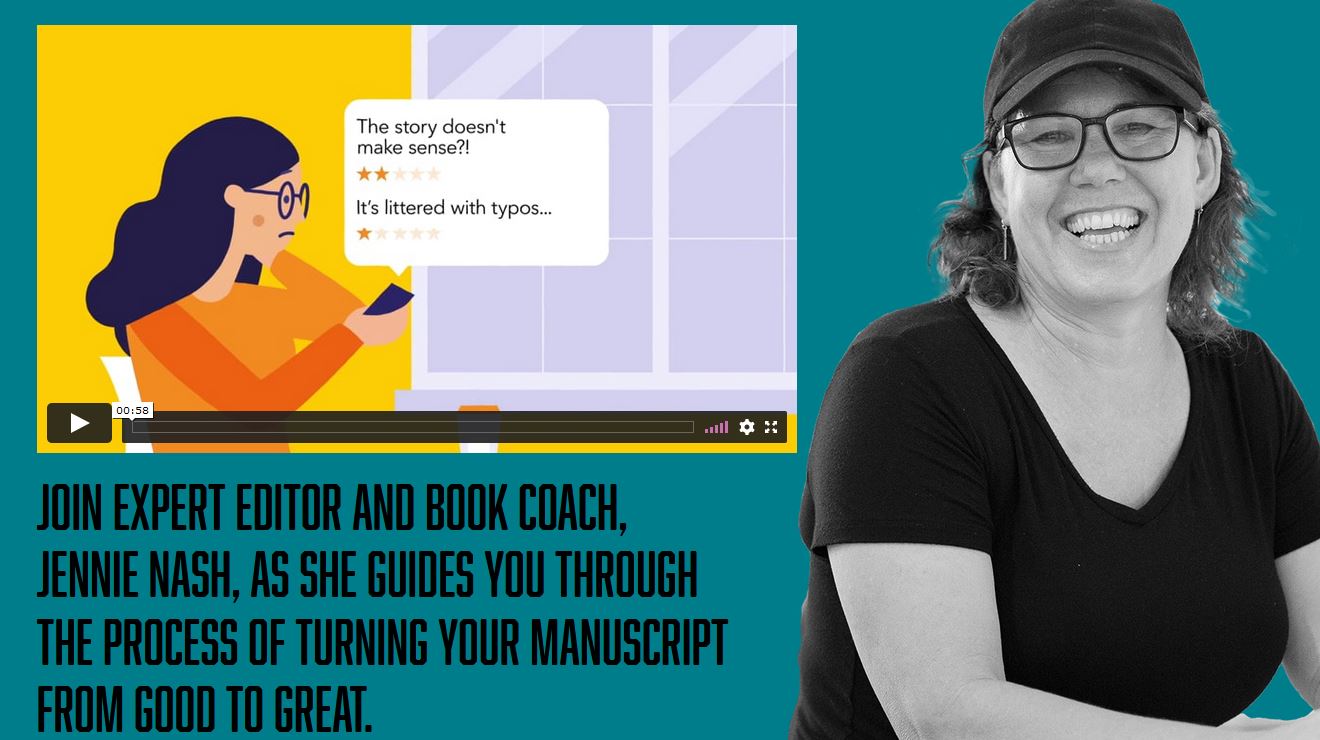Jennie Nash’s Novel Revision Course with Early-Bird Discount
Recently, I got a chance to preview a new novel revision course from Mark Dawson’s Self-Publishing Formula website that I think is worth recommending.
(Note: I’ve been a longtime member of his Facebook group, and that’s the limit. Dawson doesn’t know me, and I earn nothing by recommending him or his courses.)
That out of the way, I think that one of the biggest obstacles indie writers face is learning how to revise their novels. There are plenty of how-to books out there, and plenty of advice, but apart from “Self-Editing for Fiction Writers,” I’ve found them lacking.
The advice I’ve seen have all been of a piece: look at the characters, look at the scenes, look at the background, look at this, look at that. They didn’t speak to the way I think.
In Career Indie Author, I recommended Holly Lisle’s One-Pass Revision Method. I used it to revise my two (unreleased) novellas and found it enormously useful.
Recently, Dawson opened the doors to this revision course by editor Jennie Nash. It follows the same method as Holly’s, but with some interesting twists. I’m only a third of the way into the course — I had to stop to take on a project with a hard deadline (ironically, it was a developmental edit) but I’m looking forward to getting back into it.
Nash’s novel revision course is not long, about three to four hours long, but it is detailed in its methodology and easy to follow.
The first part takes you to the 50,000-foot view by asking you to summarize your book into a few pages. She wants you to back away from the details of the work to the narrative arc, from beginning to end. Get the info into your head, then as you break it down in the next section, you’ll compare and contrast and see where the narrative might be going off the rails.
One neat metaphor she uses the stop light to categorize the weak spots in the manuscript:
* Red light issues will cause the read to fling the book into the corner. These are gaping plot holes, structural problems, subplot issues, etc.
If you want a comforting thought, she says that in a typical manuscript, she sees four to seven red-light issues.
* Yellow light issues are smaller than red-light issues. They may not stop the reader, but they damage their attention span. These can be dialog issues, too much infodump, pointless chapters, and moderate word cuts.
* Green light issues — admitted a weak spot in the metaphor because green means “go,” doesn’t it? — involve grammar, spelling, and finding better words than the ones you wrote. These are the ones inexperienced authors head for first, because they’re easy to see.
Nash, however, won’t have any of that behavior. She wants you to work on the red-light issues first. And she does that by having you do what she calls an Inside Outline. This is a chapter-by-chapter breakdown, and she not only describes the process, she gives you examples of Inside Outlines by other authors, including SPF’s own James Blatch.
Once you’ve done that, she leads you into the prioritizing process, and how to execute the fixes and polish your story. I admit that I haven’t gotten that far yet. I want to use the course on one of my works, but I’m enormously impressed with what I’ve seen so far.
The course also includes admittance to a private Facebook group where you can ask questions about the method.
The course’s retail price is $300, but because this is new, they’ve discounted it to $197, or 12 monthly payments of $21. Like all of the SPF courses, once you’ve bought it, you can return to it anytime you like. You can also download the classes and the handouts, so you can keep the material handy.
I would say that the only downside to the course is that you have to put in the work, but you know that already, don’t you my droogs? And I speak as someone who thought that buying how-to books was the same as using them.
I still recommend Holly Lisle’s method (and she offers classes as well), but I think this is worthwhile, too.
